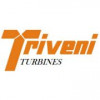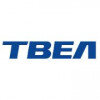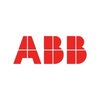Filter interviews by
Clear (1)
Transformers & Rectifiers (India) Graduate Engineer Interview Questions and Answers
Transformers & Rectifiers (India) Graduate Engineer Interview Experiences
1 interview found
I applied via campus placement at Vishwakarma Government Engineering College, Ahmedabad and was interviewed in Jan 2024. There were 2 interview rounds.
(1 Question)
- Q1. What is transformer, what is the motor ,how motor slip we define,motor synchronous speed Ns define.what are the types of transformer.what are the part of the Transformers.
- Ans.
A transformer is an electrical device that transfers electrical energy between two or more circuits through electromagnetic induction. A motor is a machine that converts electrical energy into mechanical energy. Motor slip is the difference between the synchronous speed and the actual speed of the motor. Synchronous speed (Ns) is the speed at which the rotating magnetic field of the motor is in synchronism with the fre...
(1 Question)
- Q1. Please say something about yourself.
Top trending discussions






Interview questions from similar companies

Graduate Engineer Interview Questions & Answers
Toshiba Transmission & Distribution Systemsposted on 6 Aug 2022
I was interviewed in Jul 2022.
60 percent core and 40 percent aptitude
(6 Questions)
- Q1. What are the tests done on a transformer
- Ans.
Tests done on a transformer include insulation resistance test, turns ratio test, winding resistance test, and load test.
Insulation resistance test checks the insulation resistance between windings and between windings and ground.
Turns ratio test measures the ratio of the number of turns in the primary winding to the number of turns in the secondary winding.
Winding resistance test measures the resistance of each windin...
- Q2. Why CT and PT are used
- Ans.
CT and PT are used in electrical systems for measurement and protection purposes.
CT (Current Transformer) is used to measure high currents and step them down to a manageable level for measurement and protection devices.
PT (Potential Transformer) is used to measure high voltages and step them down to a safe level for measurement and protection devices.
CTs and PTs provide isolation and safety by separating the high volta...
- Q3. What is the generation voltage in india
- Ans.
The generation voltage in India varies depending on the location and power plant.
The voltage ranges from 110V to 440V depending on the location.
The power plants generate electricity at different voltages.
The national grid operates at a voltage of 400kV and 765kV.
India has a mix of AC and DC power transmission systems.
- Q4. Why do we use high voltage for transmission?
- Ans.
High voltage is used for transmission to reduce power loss and increase efficiency.
High voltage reduces the current required for a given amount of power, which reduces power loss due to resistance in the transmission lines.
Lower current also means smaller conductors can be used, reducing material and installation costs.
High voltage transmission is more efficient over long distances, reducing the need for additional pow...
- Q5. Which power plant is cheapest to install
- Ans.
Renewable energy power plants are generally cheaper to install than traditional fossil fuel power plants.
Renewable energy power plants such as solar, wind, and hydroelectric are cheaper to install than traditional fossil fuel power plants.
The cost of installation for renewable energy power plants has decreased significantly in recent years due to advancements in technology and increased demand.
Fossil fuel power plants ...
- Q6. Why OC test done on LV side and SC test on HV side of Transformers
- Ans.
OC test is done on LV side to avoid high voltage on secondary side. SC test is done on HV side to avoid high current on primary side.
LV side has lower voltage rating, hence safer for OC test
HV side has higher current rating, hence suitable for SC test
OC test checks insulation resistance and winding resistance
SC test checks impedance and voltage regulation
Example: A 100 MVA transformer with 220 kV HV and 33 kV LV rating
Interview Preparation Tips

Graduate Engineer Trainee (Get) Interview Questions & Answers
Triveni Turbinesposted on 29 Apr 2024
I applied via Campus Placement and was interviewed in Oct 2023. There were 5 interview rounds.
It was general aptitude, all the questions were about the fundamental of engineering.
Group discussion was conducted for the candidates who were not in the top 10 of the 1st round aptitude. prepare for the general topics, more than knowledge about the topics your communication is very much important.
(1 Question)
- Q1. There will be direct 1st stage technical interview for the candidates who are in the top 10 in the aptitude. They will ask you what is your favorite subjects in the engineering. and all the questions will ...
(1 Question)
- Q1. After clearing the 1st round technical interview there will be second round technical round with the senior most employee and most experienced person. The process of the interview remains same as the 1st r...
(1 Question)
- Q1. This will be a panel interview and there were around 6 to 8 interviewing officers around me and all the questions were typical HR round questions. Just answer and be yourself.
Interview Preparation Tips

Graduate Engineer Trainee (Get) Interview Questions & Answers
Siechem Technologiesposted on 4 Apr 2023

Basics questions related to their department.
(2 Questions)
- Q1. Self intro, family background, Skill based questions etc...,coding skills, basics, technical questions.
- Q2. Self intro, family background, skill based questions, etc..., Coding skills , basics, technical questions.
Interview Preparation Tips

Graduate Engineer Trainee (Get) Interview Questions & Answers
Tbea Energyposted on 19 May 2017
Interview Questionnaire
1 Question
- Q1. What is the working principle of induction machine? - How does the flux is induced in induction machine? - what is infinite bus? - If load is suddenly changed then what will change in infinite bus? - W...
- Ans.
Answers to questions related to induction machine and power transmission
Induction machine works on the principle of electromagnetic induction
Flux is induced in the rotor of the induction machine due to the rotating magnetic field produced by the stator
Infinite bus is a hypothetical bus with infinite power capacity and voltage
If load is suddenly changed in infinite bus, the voltage and frequency will change
High voltage ...
Interview Preparation Tips

Graduate Engineer Interview Questions & Answers
Toshiba Transmission & Distribution Systemsposted on 6 Aug 2022
I was interviewed in Jul 2022.
60 percent core and 40 percent aptitude
(6 Questions)
- Q1. What are the tests done on a transformer
- Ans.
Tests done on a transformer include insulation resistance test, turns ratio test, winding resistance test, and load test.
Insulation resistance test checks the insulation resistance between windings and between windings and ground.
Turns ratio test measures the ratio of the number of turns in the primary winding to the number of turns in the secondary winding.
Winding resistance test measures the resistance of each windin...
- Q2. Why CT and PT are used
- Ans.
CT and PT are used in electrical systems for measurement and protection purposes.
CT (Current Transformer) is used to measure high currents and step them down to a manageable level for measurement and protection devices.
PT (Potential Transformer) is used to measure high voltages and step them down to a safe level for measurement and protection devices.
CTs and PTs provide isolation and safety by separating the high volta...
- Q3. What is the generation voltage in india
- Ans.
The generation voltage in India varies depending on the location and power plant.
The voltage ranges from 110V to 440V depending on the location.
The power plants generate electricity at different voltages.
The national grid operates at a voltage of 400kV and 765kV.
India has a mix of AC and DC power transmission systems.
- Q4. Why do we use high voltage for transmission?
- Ans.
High voltage is used for transmission to reduce power loss and increase efficiency.
High voltage reduces the current required for a given amount of power, which reduces power loss due to resistance in the transmission lines.
Lower current also means smaller conductors can be used, reducing material and installation costs.
High voltage transmission is more efficient over long distances, reducing the need for additional pow...
- Q5. Which power plant is cheapest to install
- Ans.
Renewable energy power plants are generally cheaper to install than traditional fossil fuel power plants.
Renewable energy power plants such as solar, wind, and hydroelectric are cheaper to install than traditional fossil fuel power plants.
The cost of installation for renewable energy power plants has decreased significantly in recent years due to advancements in technology and increased demand.
Fossil fuel power plants ...
- Q6. Why OC test done on LV side and SC test on HV side of Transformers
- Ans.
OC test is done on LV side to avoid high voltage on secondary side. SC test is done on HV side to avoid high current on primary side.
LV side has lower voltage rating, hence safer for OC test
HV side has higher current rating, hence suitable for SC test
OC test checks insulation resistance and winding resistance
SC test checks impedance and voltage regulation
Example: A 100 MVA transformer with 220 kV HV and 33 kV LV rating
Interview Preparation Tips

Graduate Engineer Trainee (Get) Interview Questions & Answers
Triveni Turbinesposted on 22 Mar 2023
I applied via campus placement at KDK College of Engineering, Nagpur and was interviewed in Feb 2023. There were 4 interview rounds.

They had given the topic and asked to speak on it for 1 minute.
(1 Question)
- Q1. 1)Self Introduction 2) Project 3) Machine related questions and some also from power system Example: star delta starter its need, motor generator difference its law, describe generation, transmission, dist...
(1 Question)
- Q1. 1) self introduction 2) project 3) internships 4) favorite subjects and questions related on that subjects 5) basic electrical
Interview Preparation Tips
Prepare your project and internships by hard

Graduate Engineer Trainee (Get) Interview Questions & Answers
Toshiba Transmission & Distribution Systemsposted on 29 Jan 2022
I applied via Naukri.com and was interviewed in Dec 2021. There were 2 interview rounds.
Aptitude test along with core(materials)
(1 Question)
- Q1. Tell me about yourself? questions on internship? about transformers?(parts) prior work experience?
Interview Preparation Tips

Graduate Engineer Trainee (Get) Interview Questions & Answers
Triveni Turbinesposted on 14 Mar 2023
I applied via Campus Placement and was interviewed in Feb 2023. There were 2 interview rounds.
Basic Core Question
Numerical based and logic based question
Topic was Air pollution prevention methods in urban area
Interview Preparation Tips
Always revise basics of Core subjects

Graduate Engineer Trainee (Get) Interview Questions & Answers
Triveni Turbinesposted on 2 Mar 2022
I applied via Campus Placement and was interviewed in Feb 2022. There were 5 interview rounds.
Prepare basics of your engineering Production, Automobile, Thermal, Aptitude, Reasoning.
Depend on the HR
(1 Question)
- Q1. Fav Subject and Basics of Engineering
(1 Question)
- Q1. Fav Subject and basics of Engineering
(2 Questions)
- Q1. This is the final all the panel member sits and ask us about our projects activities basics of turbine
- Q2. What is Rankins Cycle Explain? etc.
- Ans.
Rankine cycle is a thermodynamic cycle used in power plants to convert heat energy into mechanical work.
Rankine cycle is a vapor power cycle.
It consists of four processes: heating, vaporization, expansion, and condensation.
The cycle uses a working fluid, typically water, to transfer heat from a heat source to a heat sink.
The working fluid is pumped to a boiler where it is heated and vaporized.
The high-pressure vapor is...
Interview Preparation Tips
Transformers & Rectifiers (India) Interview FAQs
Recently Viewed
Tell us how to improve this page.
Interview Questions for Popular Designations
- Graduate Engineer Trainee (Get) Interview Questions
- Graduate Trainee Interview Questions
- Production Graduate Engineer Trainee Interview Questions
- Graduate Apprentice Trainee Interview Questions
- Graduate Apprenticeship Trainee Interview Questions
- Graduate Student Interview Questions
- Graduate Apprentice Interview Questions
- Post Graduate Engineer Trainee [pget] Interview Questions
- Show more
Transformers & Rectifiers (India) Graduate Engineer Interview Process
based on 1 interview
Interview experience
Interview Questions from Similar Companies
Fast track your campus placements
|
Production Engineer
45
salaries
| ₹2.2 L/yr - ₹4.9 L/yr |
|
Assistant Manager
27
salaries
| ₹5 L/yr - ₹14 L/yr |
|
Design Engineer
20
salaries
| ₹2.2 L/yr - ₹6 L/yr |
|
Executive Accountant
20
salaries
| ₹1.7 L/yr - ₹4 L/yr |
|
Senior Engineer
13
salaries
| ₹3.6 L/yr - ₹6 L/yr |

BHEL

Crompton Greaves Consumer Electricals

Siemens

ABB
- Home >
- Interviews >
- Transformers & Rectifiers (India) Interview Questions >
- Transformers & Rectifiers (India) Graduate Engineer Interview Questions











